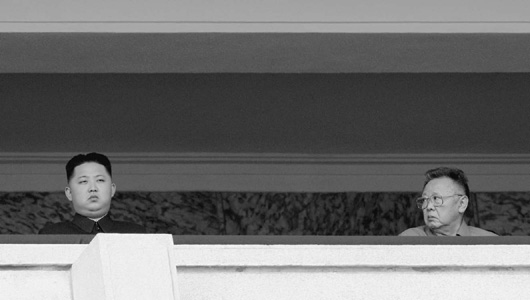
The collapse of East European communism and the dissolution of the Soviet Union in 1989–91 spelled disaster for North Korea, which to survive had relied extensively on Soviet aid and concessional pricing for trade. The reality of an impoverished and isolated North Korea was laid bare at a time when South Korea was basking in the afterglow of hosting the 1988 Summer Olympics. The changing geopolitical environment and the stark contrast between the South and the North led South Korea’s President No T’ae-u (Roh Tae-woo), elected in 1987, to pursue rapprochement with the communist world, including North Korea. No’s Nordpolitik policy aimed to establish close relations with North Korea’s allies and thereby induce it to open up to the world. Although Nordpolitik saw considerable diplomatic and economic success, it did not open up the North.
When it was discovered that Iraq had failed to disclose its nuclear program in the aftermath of the first Gulf War in 1991, Hans Blix, the director of the International Atomic Energy Agency (IAEA), the UN agency responsible for enforcing the Nuclear Nonproliferation Treaty (NPT), decided to get tougher in demanding that NPT signatories establish acceptable inspection regimes as soon as possible. North Korea became the first test case, one that the North had not expected. This led to conflicts between North Korean officials and IAEA inspectors and the eventual withdrawal of North Korea from the NPT in March 1993. The possibility of a second Korean War loomed ominously on the horizon.
War was averted when former president Jimmy Carter helped to broker a deal between the United States and North Korea. North Korea agreed that it would abandon its nuclear program if the United States and other allies agreed to provide two light-water reactors (LWRs) for power generation. Signed in October 1994, the Agreed Framework also outlined steps for normalization of relations between the United States and North Korea and assurance that the Americans would never threaten North Korea with nuclear weapons. In 1994, North Korea experienced two catastrophes: the beginnings of a devastating famine and the death of Kim Il Sung. Unable to feed its own people but refusing to initiate necessary reforms, North Korea resorted to provocations and brinkmanship to survive. After discovering that North Korea had secretly begun a uranium enrichment program, the United States declared the Agreed Framework void, and construction of the LWRs stopped. In 2006, North Korea surprised the world by testing a nuclear device. A second nuclear device was tested in 2009. Following the sinking of a South Korean ship in March 2010, allegedly by North Korea, North-South relations have deteriorated to the lowest point in years. North Korea experienced another blow in December 2011 following the unexpected death of Kim Jong Il and the anointment of his younger son, Kim Chŏng-ŭn (Kim Jong-un), as successor. Isolated and impoverished, the P’yŏngyang regime is transitioning under the watchful eye of its only ally and benefactor, China. So what is next for North Korea? How will the Korean War finally end?